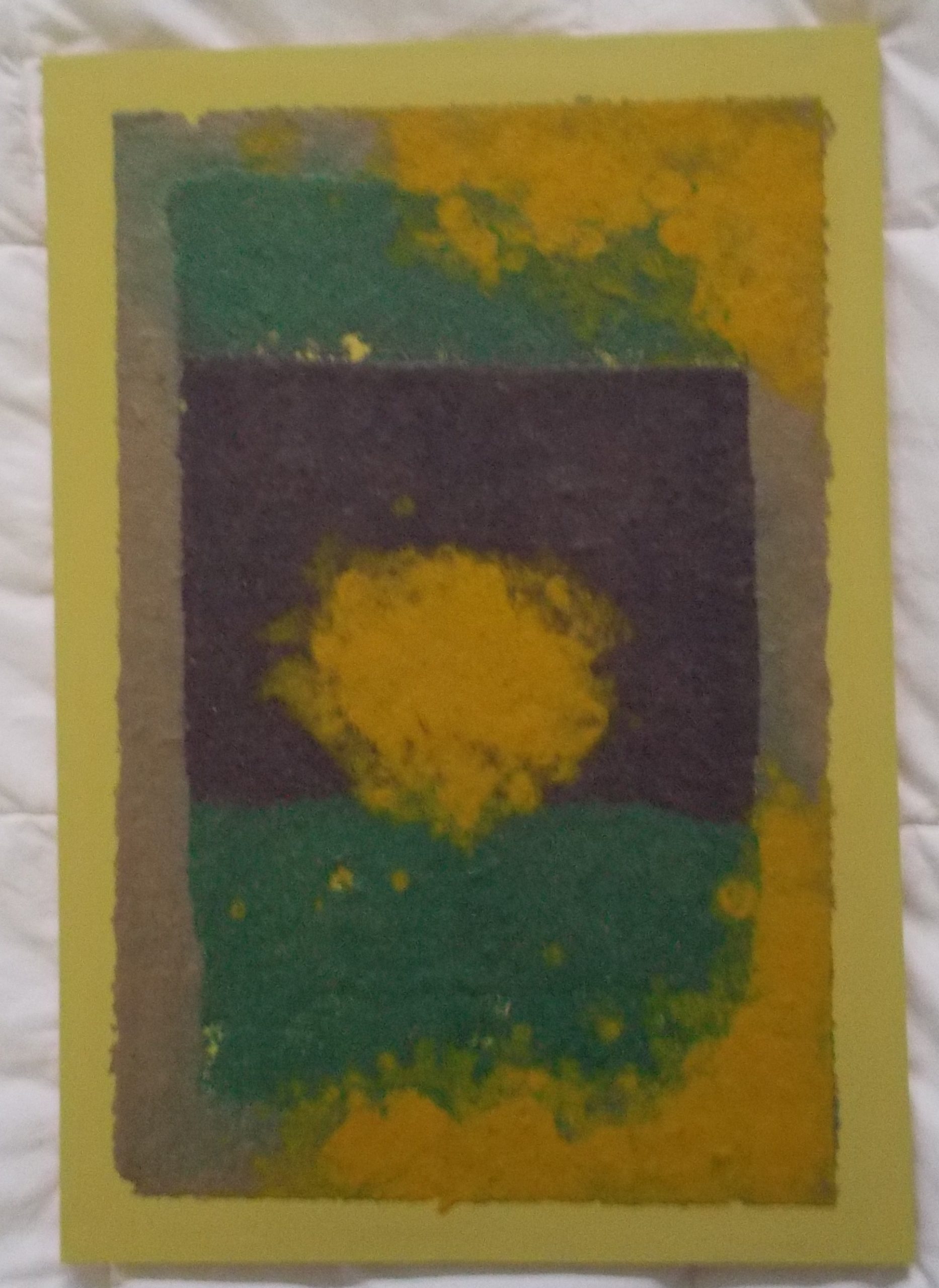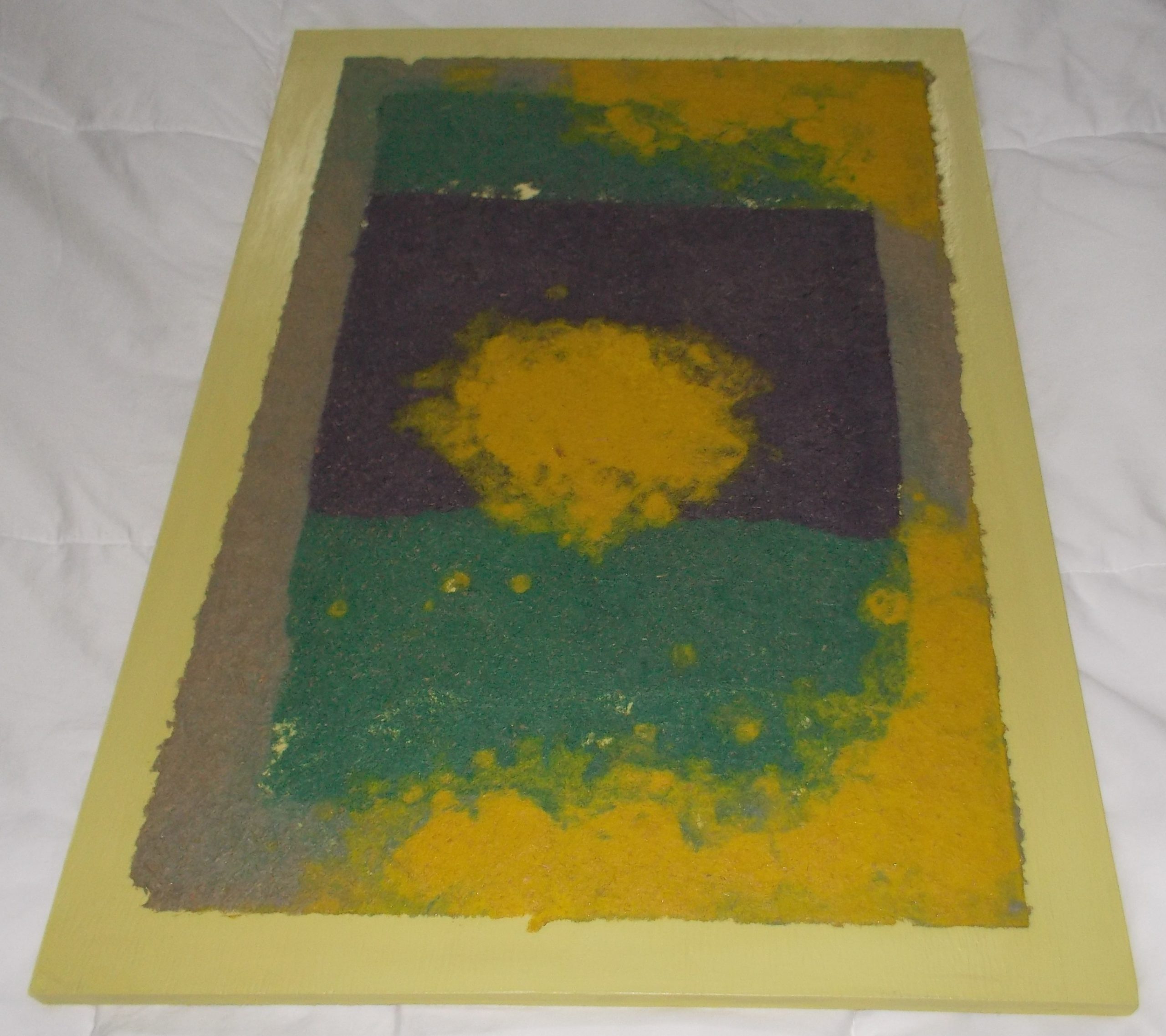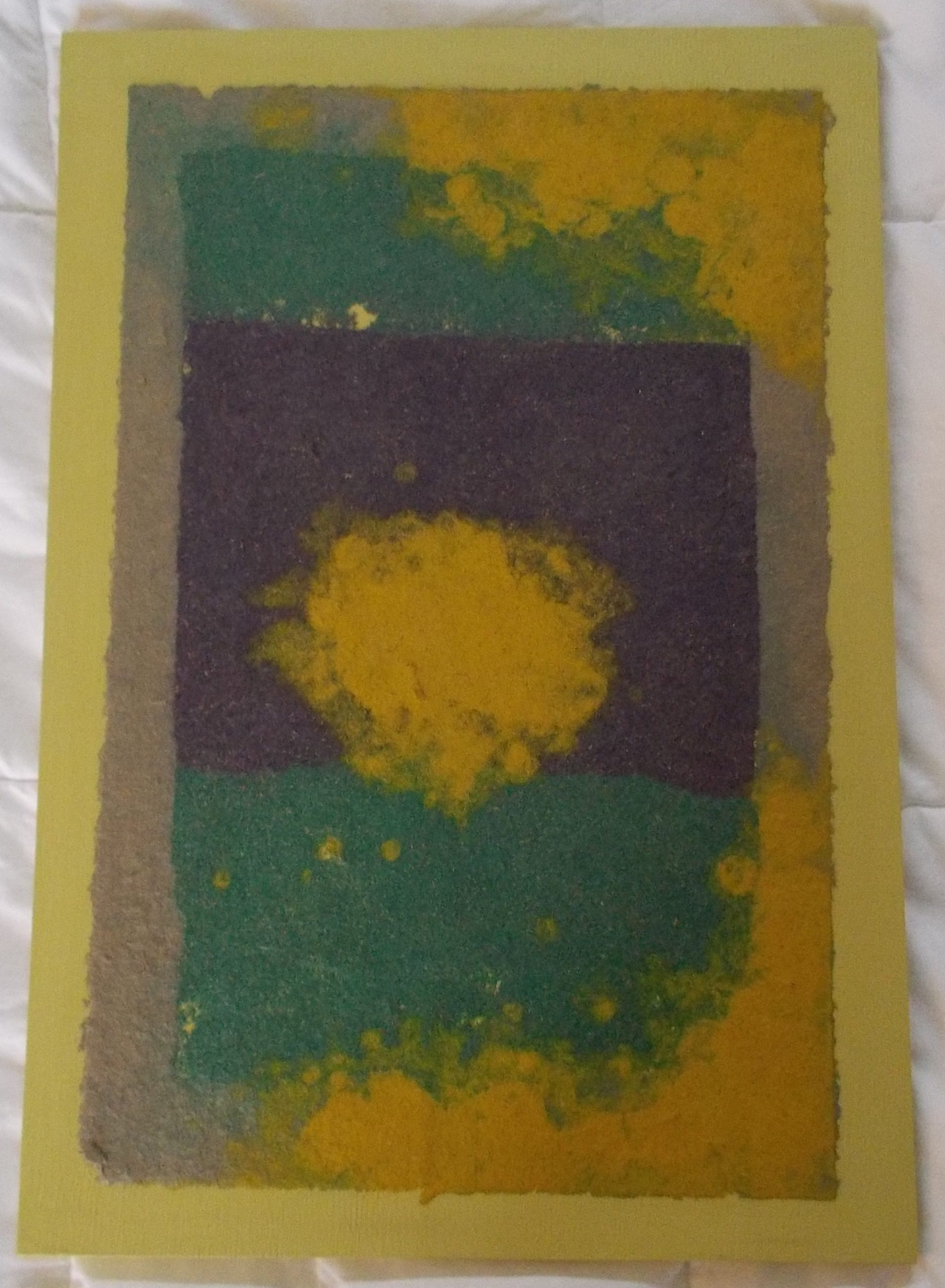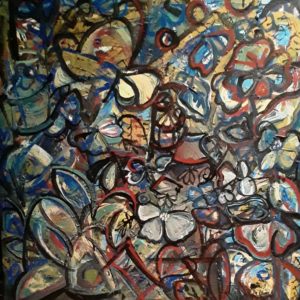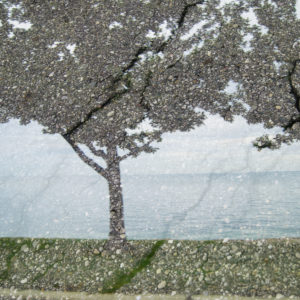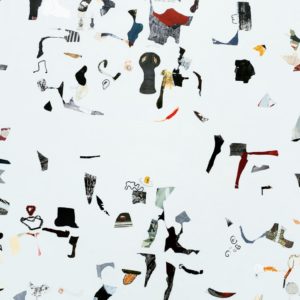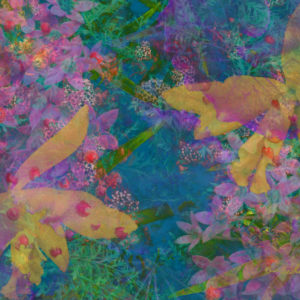Bunting, Bruce – Through the Window 1
Artist: Bruce Bunting
Description of piece: Composed of bamboo paper made from used bamboo placemats. It consists of multiple pigmented pours completed within a multi-section, shaped metal deckle, and then with non-stenciled pulp overlayed. It may be the first of a series because the metal deckle is durable and can be reused. All the pulp was in place before the paper was pressed and dried. These papers are two-sided because the pulp areas extend throughout the piece, but this one has been mounted to a plywood board for stability.
Medium: Handmade paper by artist
Dimensions: 14″ wide x 20″ high x 2″ deep
Market Value: $150
Artist statement:
I am a retired automotive engineer living in Knoxville and have always been interested in art. I was brought up in Detroit and spent a lot of time at the Detroit Institute of Arts, first as a child and then as a student at Wayne. After I retired I found out that I had cancer and went through a lengthy treatment and recovery process. I found that making art was a good way to keep active and express my feelings. Some of my art from that period was quite morbid and some quite cheerful. During my work career, I was introduced to commercial papermaking through a cellulosic biofuel project. The tools and processes of papermaking attracted me and I began to study more about it. Ultimately, I decided to set up my own papermaking studio, and I built all of my equipment. At the present time, I would say I am in the experimental phase, further developing my equipment, becoming adept at papermaking, and deciding what techniques and fibers are of interest to me.
The piece I submitted for this show, entitled, “Through the Window 1” is composed of bamboo paper I made from some used bamboo placemats. It consists of multiple pigmented pours completed within a multi-section, shaped metal deckle, and then with non-stenciled pulp overlayed. It may be the first of a series because the metal deckle is durable and can be reused. All the pulp was in place before the paper was pressed and dried. These papers are two-sided because the pulp areas extend throughout the piece, but this one has been mounted to a plywood board for stability.
